India: Difference between revisions
Gallileo2k (talk | contribs) m Reverted edits by 68.126.189.207 to last version by Ragib |
|||
| Line 129: | Line 129: | ||
''Main article: [[Sports in India]]'' |
''Main article: [[Sports in India]]'' |
||
India's '''national sport''' is [[field hockey]], although [[cricket]] is now the ''de facto'' national game due to its success and popularity in recent times, with the Indian cricket team (World Champions in [[1983]]) one of the top contenders around. Though cricket's popularity is widespread, it is not the most popular sport in quite a few Indian states, particularly in India's northeast. Another international sport in which India has a fair degree of parity with other nations is [[chess]], in which an Indian has been [[FIDE]] World Champion and several players have made significant inroads, in recent years, well past [[International Grandmaster|Grandmaster]] level. |
India's '''national sport''' is [[field hockey]], although [[cricket]] is now the ''de facto'' national game due to its success and popularity in recent times, with the Indian cricket team (World Champions in [[1983]]) one of the top contenders around. Though cricket's popularity is widespread, it is not the most popular sport in quite a few Indian states, particularly in India's northeast. Cricket in India has a concept of non-playing captain, where the captain, even though he is a part of the team, doesn't perform. Another international sport in which India has a fair degree of parity with other nations is [[chess]], in which an Indian has been [[FIDE]] World Champion and several players have made significant inroads, in recent years, well past [[International Grandmaster|Grandmaster]] level. |
||
India has had relatively little success in other international events like the [[Olympics]], where it garnered a total of just one silver medal and two bronze medals in the previous three Olympics. However, it has won eight [[field hockey]] golds. India has done rather well in [[Davis Cup]] [[tennis]] tournaments, having reached the finals on three occasions. Its players have secured several individual titles and [[Grand Slam]] doubles wins, but an Indian is yet to win a [[Grand Slam]] singles title. |
India has had relatively little success in other international events like the [[Olympics]], where it garnered a total of just one silver medal and two bronze medals in the previous three Olympics. However, it has won eight [[field hockey]] golds. India has done rather well in [[Davis Cup]] [[tennis]] tournaments, having reached the finals on three occasions. Its players have secured several individual titles and [[Grand Slam]] doubles wins, but an Indian is yet to win a [[Grand Slam]] singles title. |
||
Revision as of 05:09, 12 September 2005
The Republic of India is a country in South Asia which comprises most of the Indian subcontinent. India has a coastline which stretches over seven thousand kilometres,Template:Inote and shares its borders with Pakistan to the west, the People's Republic of China, Nepal, and Bhutan to the northeast, and Bangladesh and Myanmar on the east. On the Indian Ocean, it is adjacent to the island nations of the Maldives on the southwest, Sri Lanka on the south, and Indonesia on the southeast. India also claims a border with Afghanistan to the northwest.Template:Mn
India is the tenth largest economy in the world. It is also the second most populous country in the world, with a population of over one billion, and is the seventh largest country by geographical area. It is home to some of the most ancient civilisations, and a centre of important historic trade routes. Four major world religions: Hinduism, Buddhism, Jainism and Sikhism have originated from India. Formerly a major part of the British Empire as British India before gaining independence in 1947, during the past twenty years the country has grown significantly, especially in its economic and military spheres, regionally as well as globally.
The official name of the country, India IPA: ['ɪndɪə], is derived from the Old Persian version of Sindhu, the historic local appellation for the river Indus; see Origin of India's name. The Constitution of India and general usage also recognises Bharat (Hindi: भारत IPA: ['bɦəːɾət̪h] ), which is derived from the Sanskrit name of an ancient Hindu king, whose story is to be found in the Mahabharata, as an official name of equal status. A third name, Hindustan
(Hindi: हिन्दूस्थान , IPA: [hɪn'duːstɑːn]) , or land of the Hindus in Persian, has been used since Mughal times, though its contemporary use is unevenly applied due to domestic disputes over its representative as a national signifier.
History
Main article: History of India
Stone Age rock shelters with paintings at Bhimbetka in Madhya Pradesh are the earliest known traces of human life in India. The first known permanent settlements appeared 9,000 years ago and developed into the Indus Valley Civilization, which peaked between 2600 BC and 1900 BC. It was followed by the Vedic Civilization.
From around 500 BC onwards, many independent kingdoms came into being. In the north, the Maurya dynasty, which included the Buddhist king Ashoka, contributed greatly to India's cultural landscape. From 180 BC, a series of invasions from Central Asia followed, with the successive establishment in the northern Indian subcontinent of the Indo-Greek, Indo-Scythian and Indo-Parthian kingdoms, and finally the Kushan Empire. From the 3rd century onwards the Gupta dynasty oversaw the period referred to as ancient India's "Golden Age".
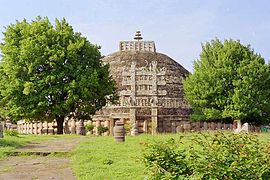
In the south, several dynasties including the Chalukyas, Cheras, Cholas, Kadambas, Pallavas and Pandyas prevailed during different periods. Science, art, literature, mathematics, astronomy, engineering, religion, and philosophy flourished under the patronage of these kings.
Following the Islamic invasions in the beginning of the second millennium, much of north and central India came to be ruled by the Delhi Sultanate, and later, much of the entire subcontinent by the Mughal dynasty. Nevertheless, several indigenous kingdoms remained or rose to power, especially in the relatively sheltered south.
During the middle of the second millennium, several European countries, including the Portuguese, Dutch, French, and British, who were initially interested in trade with India, took advantage of fractured kingdoms fighting each other to establish colonies in the country. The English managed to thwart the other colonisers and came to rule much of the country by 1840. After a failed insurrection in 1857 against the British East India Company, popularly known in India as the First War of Indian Independence, most of India came under the direct administrative control of the crown of the British Empire.

In the early part of the twentieth century, a prolonged and largely non-violent struggle for independence, the Indian independence movement, followed. It came to be eventually led by Mahatma Gandhi, regarded officially as the father of modern India. The culmination of this path-breaking struggle was reached on 1947-08-15 when India gained full independence from British rule, later becoming a republic on 1950-01-26.
As a multi-ethnic and multi-religious country, India has had its share of sectarian violence and insurgencies in different parts of the country. Nonetheless, it has held itself together as a secular, liberal democracy barring a brief period from 1975 to 1977 during which the then Prime Minister Indira Gandhi declared a "state of emergency" with the suspension of civil rights. India has unresolved border disputes with China, which escalated into a brief war in 1962, and Pakistan which resulted in wars in 1947, 1965, and 1971, and a border altercation in the northern state of Kashmir in 1999. India was a founding member of the Non-Aligned Movement and the United Nations. In 1974, India conducted an underground nuclear test, making it an unofficial member of the "nuclear club", which was followed up with a series of five more tests in 1998. Significant economic reforms beginning in 1991 have transformed India into one of the fastest growing economies in the world and added to its global clout.
See also: Timeline of Indian history, Military History of India
Government
Main article: Government of India Template:National symbols of India The Constitution of India states India to be a sovereign, socialist, secular, democratic republic. India is a federal republic, with a bicameral parliament operating under a Westminster-style parliamentary system. It has a three branch system of governance consisting of the legislature, executive and judiciary.
The President, who is the head of state, has a largely ceremonial role. His roles include interpreting the constitution, signing laws into action, and issuing pardons. He is also the Commander-in-Chief of the armed forces. The President and Vice-President are elected indirectly by an electoral college for five-year terms. The Prime Minister is the head of government and most executive powers are vested in this office. He (or she) is elected by legislators of the political party, or coalition, commanding a parliamentary majority, and serves a five-year term incumbent upon enjoying this majority. The constitution does not provide for a post of Deputy Prime Minister, but this option has been exercised from time to time.
The legislature of India is the bicameral Parliament which consists of the upper house known as the Rajya Sabha, or Council of States, the lower house known as the Lok Sabha, or House of the People, and the President. The 245-member Rajya Sabha is chosen indirectly through an electoral college and has a staggered six year term. The 552-member Lok Sabha is directly elected for a five year term, and is the determinative constituent of political power and government formation. All Indian citizens above the age of eighteen are eligible to vote.
The executive arm consists of the President, Vice-President and the Council of Ministers (the Cabinet) headed by the Prime Minister. Any minister holding a portfolio must be a member of either house of parliament. In India's parliamentary system, the executive is subordinate to the legislature.
India's independent judiciary, consists of the Supreme Court, headed by the Chief Justice of India. The Supreme Court has both original jurisdiction over disputes between states and the Centre, and appellate jurisdiction over the High Courts of India. There are eighteen appellate High Courts, having jurisdiction over a large state or a group of states. Each of these states has a tiered system of lower courts. A conflict between the legislature and the judiciary is referred to the President.
Politics
Main article: Politics of India
For most of its independent history, India's national government has been controlled by the Indian National Congress Party. Following its position as the largest political organisation in pre-independence India, Congress, usually led by a member of the Nehru-Gandhi family, dominated national politics for over forty years. In 1977, a united opposition, under the banner of the Janata Party, won the election and formed a non-Congress government for a short period after the unpopular 'emergency rule' imposed by Indira Gandhi in the previous Congress regime. In 1996, the Bharatiya Janata Party (BJP), a political party with a right wing nationalist ideology, became the largest single party, and established for the first time a serious opposition to the largely left wing ideology of the Congress. But power was held by two successive coalition governments, who stayed on with the support of the Congress. In 1998, the BJP formed the National Democratic Alliance (NDA) along with smaller parties and became the first non-Congress government to sustain the full five year term after it returned to power in 1999. The decade prior to 1999 was marked by short-lasting governments, with seven separate governments formed within that period. One however, a Congress government formed in 1991, lasted the full five years and initiated significant economic reforms.
In the 2004 Indian elections the Congress party returned to power after winning the largest number of seats, by a narrow margin. Congress formed a government in alliance with the Communist Party of India (Marxist) and with several mostly-regional parties called the United Progressive Alliance. The NDA, led by the BJP, currently forms the main opposition. All governments formed since 1996 have required party coalitions, with no single majority party, due to the steady rise of regional parties at the national level. Template:See also4
States and union territories
Main article: States and Territories of India
India is divided into twenty-eight states (which are further subdivided into districts), six Union Territories and the National Capital Territory of Delhi. States have their own elected government, whereas Union Territories are governed by an administrator appointed by the union government, though some have elected governments.
Template:India states
India has had two scientific bases in Antarctica – the Dakshin Gangotri and Maitri, but has made no territorial claims so far.
Geography and climate
Main article: Geography of India
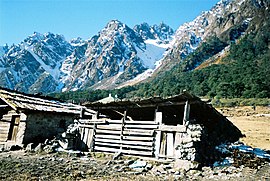
India's entire north and northeast states are made up of the Himalayan Range. The rest of northern, central and eastern India consists of the fertile Indo-Gangetic plain. Towards western India, bordering southeast Pakistan, lies the Thar Desert. The southern Indian peninsula is almost entirely composed of the Deccan plateau. The plateau is flanked by two hilly coastal ranges, the Western Ghats and Eastern Ghats.
India is home to several major rivers such as the Ganga (Ganges), the Brahmaputra, the Yamuna, the Godavari, and the Krishna. The rivers are responsible for the fertile plains in northern India which are conducive to farming.
The Indian climate varies from a tropical climate in the south to a more temperate climate in the north. Parts of India which lie in the Himalaya have a tundra climate. India gets most of its rains through the monsoons. Template:See also4
Economy
Main article: Economy of India
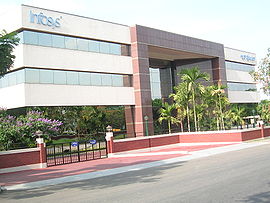
India has an economy ranked as the tenth largest in the world in terms of currency conversion and fourth largest in terms of purchasing power parity. It recorded one of the fastest annual growth rates of around eight percent in 2003. Owing to its large population, however, India's per-capita income by purchasing power parity works out to be just US$ 3,262, ranked 125th by the World Bank. India's foreign exchange reserves amount to over US$ 143 billion.Template:Inote Mumbai serves as the nation's financial capital and is also home to both the headquarters of the Reserve Bank of India and the pre-eminent Bombay Stock Exchange. While a quarter of Indians still live below the poverty line, a large middle class has now emerged along with the rapid growth of the IT industry.
The Indian economy has shed much of its historical dependence on agriculture, which now contributes to less than 25 percent of GDP.Template:Inote Other important industries are mining, petroleum, diamond polishing, films, textiles, information technology services, and handicrafts. Most of India's industrial regions are centred around major cities. In recent years, India has emerged as one of the largest players in software and business process outsourcing services, with revenues of US$ 17.2 billion in 2004-2005.Template:Inote There are also a lot of small-scale industries that provide steady employment to many of its citizens in small towns and villages.
While India receives only around three million foreign visitors a year, tourism is still an important but under-developed source of national income. Tourism contributes 5.3 percent of India's GDP. The actual employment generation, both direct and indirect, is estimated to be 42 million, or about 10 percent of India's work force. In monetary terms, it contributes about US$4 billion in foreign exchange.Template:Inote India's major trading partners are the United States, Japan, China and the United Arab Emirates.Template:Inote
India's main exports items include agricultural products, textile goods, gems and jewellery, software services and technology, engineering goods, chemicals and leather products while its main import commodities are crude oil, machinery, gems, fertiliser, chemicals. For the year 2004, India's total exports stood at US$ 69.18 billion while the imports were worth at US $89.33 billion.Template:Inote
Demographics
Main article: Demographics of India
India is the second most populous country in the world, with only China having a larger population. Language, religion, and caste are major determinants of social and political organisation within the highly diverse Indian population today. Its biggest metropolitan agglomerations are Mumbai (formerly Bombay), Delhi, Kolkata (formerly Calcutta) and Chennai (formerly Madras).

India's literacy rate is 64.8 percent, with 53.7 percent of females and 75.3 percent of males being literate. The sex ratio is 933 females for every 1000 males.Template:Inote Work Participation Rate (WPR) (the percentage of workers to total population) stands at 39.1 percent, with male WPR at 51.7 percent and female WPR at 25.6 percent.Template:Inote India's median age is 24.66 and has a growth rate of 22.32 births per 1,000.Template:Inote
Although 80.5 percent of the people are Hindus, India is also home to the third largest population of Muslims in the world (13.4 percent; see Islam in India) after Indonesia and Pakistan. Other smaller religious minorities include Christians (2.33 percent; see Christianity in India), Sikhs (1.84 percent), Buddhists (0.76 percent), Jains (0.40 percent), Ayyavazhi (0.12 percent), Jews (see Jews in India), Parsis, Ahmadi, and Bahá'ís.Template:Inote
India is home to two major linguistic families, those of the Indo-Aryan and Dravidian-derived languages. The Indian constitution recognises 23 official languages[1]. Hindi along with English are the languages used by the Central Government for official purposes. Two classical languages native to the land are Sanskrit and Tamil. The number of mother tongues in India is as high as 1,652.Template:Inote
Culture
Main article: Culture of India

India has a rich and unique cultural heritage, and has managed to preserve its established traditions throughout history. It has always absorbed customs, traditions and ideas from both invaders and immigrants. Many cultural practices, languages, customs and even monuments are examples of this co-mingling over centuries. Famous monuments such as the Taj Mahal and other examples of Islamic-inspired architecture have been inherited from the Mughal dynasty, perhaps India's most significant. These are the result of a syncretic tradition that combined elements from all parts of the country.
Indian society is largely pluralist, multilingual and multicultural. Religious practices of various faiths are an integral part of everyday life in society. Education is highly regarded by members of every socio-economic stratum. Traditional Indian family values are highly respected and considered sacred, although urban families have grown into a nuclear family system, owing to the socio-economic constraints imposed by the traditional joint family system.
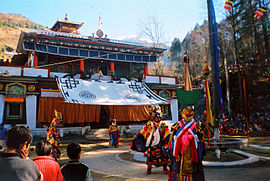
Religion in India is very public, with many practices imbued with pomp and vitality accompanying their underlying spiritual qualities. A melting pot of many religions, India has a rich diversity of festivals with many being celebrated by one and all. The most widely known and popular celebrations include the Hindu festivals of Diwali, Holi, and Dussehra. Pongal in Tamil Nadu and Onam in Kerala are harvest festivals celebrated by people belonging to all religions.
Indian music is represented by a wide variety of forms. The two main forms in terms of classical music are the Karnataka Sangeeth (Carnatic) from South India and Hindustani from the north. Popular forms of music also prevail, the most notable being Filmi music. In addition to this are the diverse traditions of folk music. Many dance forms exist in India – Bharatanatyam, Odissi, Kathakali, Kuchipudi, Kathak, Manipuri, Mohiniyattam, Yakshagana and others. They often have a narrative form (based on the Indian epics) and are usually infused with devotional and spiritual elements.
The earliest literary traditions were mostly oral and were later transcribed. Most of these spring from Indian tradition (which is later callled Hindu tradition) and are represented by sacred works like the Vedas and the epics of the Mahabharatha and Ramayana. Sangam literature from Tamil Nadu represents some of India's oldest secular traditions. There have been many notable Indian writers in modern times, both in Indian languages and in English. India's only Nobel laureate in literature was the Bengali writer Rabindranath Tagore.
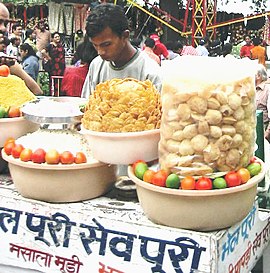
India produces the world's highest number of films every year. The most recognisable face is that of cinema production based in Mumbai, which produces mainly commercial Hindi films, often referred to as "Bollywood". Cinema in other vernacular languages are also particularly strong, with movies regularly produced in well-established Kannada, Malayalam, Tamil and Telugu industries. India's contribution to world cinema was the internationally renowned Bengali language director Satyajit Ray.
Rice and wheat (in bread forms) are the staple foods in the country. The cuisine of India is extremely diverse, as ingredients, spices and cooking methods all vary from region to region. The country is notable for its wide variety of vegetarian cuisine. Spicy food and sweets are popular in India. Traditional dress in India greatly varies across the regions in its colours and styles. The sari and the salwar kameez are popular styles of dress for women. Traditional raiments for men are the kurta and dhoti. Template:See also4
Sports and games
Main article: Sports in India
India's national sport is field hockey, although cricket is now the de facto national game due to its success and popularity in recent times, with the Indian cricket team (World Champions in 1983) one of the top contenders around. Though cricket's popularity is widespread, it is not the most popular sport in quite a few Indian states, particularly in India's northeast. Cricket in India has a concept of non-playing captain, where the captain, even though he is a part of the team, doesn't perform. Another international sport in which India has a fair degree of parity with other nations is chess, in which an Indian has been FIDE World Champion and several players have made significant inroads, in recent years, well past Grandmaster level.
India has had relatively little success in other international events like the Olympics, where it garnered a total of just one silver medal and two bronze medals in the previous three Olympics. However, it has won eight field hockey golds. India has done rather well in Davis Cup tennis tournaments, having reached the finals on three occasions. Its players have secured several individual titles and Grand Slam doubles wins, but an Indian is yet to win a Grand Slam singles title.
Some traditional indigenous sports are kabaddi, Kho Kho and gilli-danda, which are played in most parts of the country. Chess, carrom, polo, snooker and badminton are some other games and sports that are said to have originated in India. The last two mentioned have seen Indians achieve some international success. Football (soccer) also finds a large viewership in almost the entire country, and is the most popular sport in many states of India. Formula 1 and Basketball are also increasing in popularity, though their reach is largely limited to urban areas.
Holidays
Main article: Holidays in India
India has three National Holidays. Other sets of holidays, varying between nine to twelve, pertains to festivals, religious holidays and births of leaders are legislated by the individual states. Template:Official Holidays of India
See also
Template:Topics related to India
External links
- Official
- GOI Directory — Directory of governmental websites
- Indiaimage — National Informatics Centre — Basic Portal to Govt. of India Websites
- India in Business – Official site of the Government of India.
- Tourism of India — Ministry of Tourism
- Other
- Template:Wikitravel
- India, an external wiki
- CIA — The World Factbook — India — CIA's Factbook on India
- Country Profile: India — BBC's Country Profile on India
Notes
- Template:Mnb The Government of India considers the entire state of Jammu and Kashmir to be a part of India. This state borders a part of Afghanistan. A ceasefire sponsored by the United Nations in 1948 freezes the positions of Indian and Pakistani held territory. As a consequence, the region bordering Afghanistan is in Pakistani-administered territory.
- Template:Mnb The black line is the boundary as recognised by the government of India. The northern region of Kashmir is currently administered by India, Pakistan, and China (and coloured in as such). The delimiting of the three administered regions is not the international boundary but a ceasefire line demarcated in red. The boundary separating India and Pakistan is known as the Line of Control, that separating India and China as the 'Line of Actual Control'. Most of the state of Arunachal Pradesh is also claimed by China.
References
- "India facts and figures". Embassy of India. August 14.
{{cite web}}: Check date values in:|date=and|year=/|date=mismatch (help) - "Forex reserves up by $1bn". Economic Times. August 14.
{{cite web}}: Check date values in:|date=and|year=/|date=mismatch (help) - "India Economy". Travel Document Systems. August 14.
{{cite web}}: Check date values in:|date=and|year=/|date=mismatch (help) - "Services". India in Business. August 14.
{{cite web}}: Check date values in:|date=and|year=/|date=mismatch (help) - "Destination India: An Unpolished Diamond". Times of India. August 14.
{{cite web}}: Check date values in:|date=and|year=/|date=mismatch (help) - "US, UAE, UK, China, Japan among India's top trade partners". Indian Express. August 14.
{{cite web}}: Check date values in:|date=and|year=/|date=mismatch (help) - "CIA Factbook : India". CIA Factbook. August 14.
{{cite web}}: Check date values in:|date=and|year=/|date=mismatch (help) - "Provisional Population Totals 2001 Census". Census of India. August 14.
{{cite web}}: Check date values in:|date=and|year=/|date=mismatch (help) - "Debating India – India's literacy rate". Debating India. August 14.
{{cite web}}: Check date values in:|date=and|year=/|date=mismatch (help) - India "India – Country profiles". indexmundi.com. August 14.
{{cite web}}: Check|URL=value (help); Check date values in:|date=and|year=/|date=mismatch (help) - "Census of India 2001, Data on Religion". Census of India. August 14.
{{cite web}}: Check date values in:|date=and|year=/|date=mismatch (help) - "Languages of India". India image. August 14.
{{cite web}}: Check date values in:|date=and|year=/|date=mismatch (help) - . ISBN 8190046187.
{{cite book}}: Missing or empty|title=(help); Unknown parameter|Author=ignored (|author=suggested) (help); Unknown parameter|Publisher=ignored (|publisher=suggested) (help); Unknown parameter|Title=ignored (|title=suggested) (help); Unknown parameter|Year=ignored (|year=suggested) (help) (pg 524)
- India is also the letter I in the NATO phonetic alphabet.
